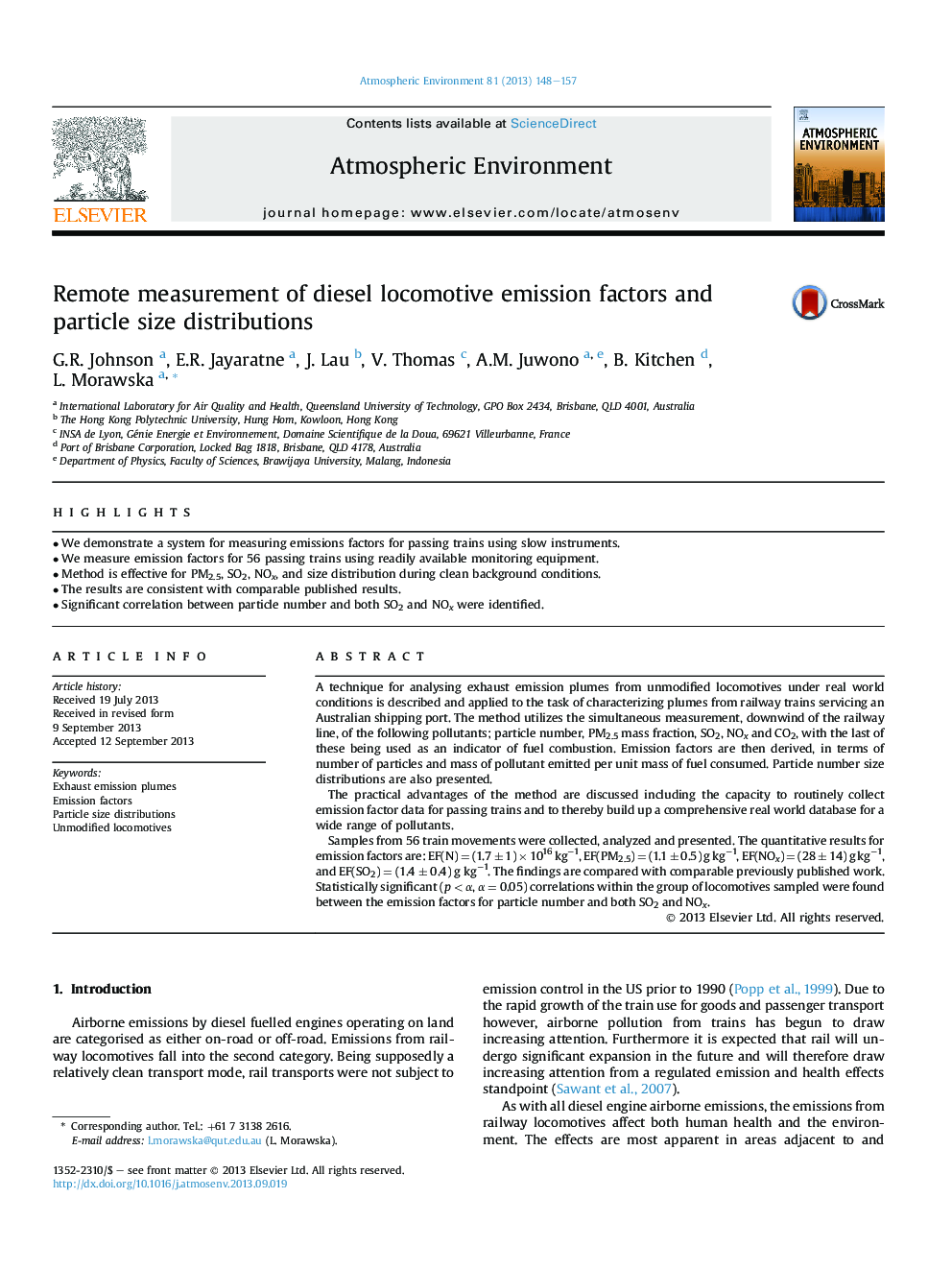| Article ID | Journal | Published Year | Pages | File Type |
|---|---|---|---|---|
| 6340406 | Atmospheric Environment | 2013 | 10 Pages |
â¢We demonstrate a system for measuring emissions factors for passing trains using slow instruments.â¢We measure emission factors for 56 passing trains using readily available monitoring equipment.â¢Method is effective for PM2.5, SO2, NOx, and size distribution during clean background conditions.â¢The results are consistent with comparable published results.â¢Significant correlation between particle number and both SO2 and NOx were identified.
A technique for analysing exhaust emission plumes from unmodified locomotives under real world conditions is described and applied to the task of characterizing plumes from railway trains servicing an Australian shipping port. The method utilizes the simultaneous measurement, downwind of the railway line, of the following pollutants; particle number, PM2.5 mass fraction, SO2, NOx and CO2, with the last of these being used as an indicator of fuel combustion. Emission factors are then derived, in terms of number of particles and mass of pollutant emitted per unit mass of fuel consumed. Particle number size distributions are also presented.The practical advantages of the method are discussed including the capacity to routinely collect emission factor data for passing trains and to thereby build up a comprehensive real world database for a wide range of pollutants.Samples from 56 train movements were collected, analyzed and presented. The quantitative results for emission factors are: EF(N) = (1.7 ± 1) Ã 1016 kgâ1, EF(PM2.5) = (1.1 ± 0.5) g kgâ1, EF(NOx) = (28 ± 14) g kgâ1, and EF(SO2) = (1.4 ± 0.4) g kgâ1. The findings are compared with comparable previously published work. Statistically significant (p < α, α = 0.05) correlations within the group of locomotives sampled were found between the emission factors for particle number and both SO2 and NOx.
